
|
||||||||||||||||||||||||||||||||
New Faculty |
||||||||||||||||||||||||||||||||
 |
||||||||||||||||||||||||||||||||
|
|
||||||||||||||||||||||||||||||||
|
I work in machine learning and data mining, medical decision making and bioinformatics, feature selection, missing values, inductive transfer, artificial neural networks, memory-based learning. I joined the Department of Computer Science at the start of the fall 2001 semester. Publications "Predicting Cesarean Delivery: Decision Tree Models." To appear in the American Journal of Obstetrics and Gynecology (2001). With Cynthia J. Sims, Leslie Meyn, Rich Rao, R. Bharat, Tom Mitchell, and Marijane Krohn. "An Evaluation of Machine Learning Methods for Predicting Pneumonia Mortality." Artificial Intelligence in Medicine 9:107-138 (1997). With G. F. Cooper, C. F. Aliferis, R. Ambrosino, J. Aronis, B. G. Buchanan, M. J. Fine, C. Glymour, G. Gordon, B. H. Hanusa, J. E. Janosky, C. Meek, T. Mitchell, T. Richardson, and P. Spirtes. "Multitask Learning." Machine Learning 28:41-75, Kluwer Academic Publishers (1997). "Experience with a Learning Personal Assistant." Communications of the ACM (1994). With Tom Mitchell, Dayne Freitag, John McDermott, and David Zabowski. "Fifteen Useful Tricks with Extra Outputs." In Neural Networks: Tricks of the Trade, G. B. Orr, and KR. Muller, editors, Springer-Verlag (1988). Patents "Using Active Monitor Illumination for 3-D Active Imaging." Patent disclosure filed April, 2000. With Rahul Sukthankar, Keiko Hasegawa, and Matt Mullin. "Iterated K-nearest neighbor Method and Article of Manufacture for Filling in Missing Values." United States Patent 6,047,287, Assignee: Justsystem Pittsburgh research Center, Pittsburgh, PA. Filed May 5, 1998, granted April 4, 2000.
|
||||||||||||||||||||||||||||||||
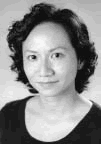 |
||||||||||||||||||||||||||||||||
|
|
||||||||||||||||||||||||||||||||
|
My research interests include the application of systems analysis techniques for water resources and environmental problems. I joined the Department of Computer Science at the start of the fall 2001 semester . With Dave Schwartz, I run CS 100 and develop the academic excellence workshops that are associated with that very important course.
New York State Section American Water Works Association Russell L. Sutphen Scholarship. John E. Perry Teaching Assistant Prize, School of Environmental Engineering, Cornell University (1999). Publications "Regression Dynamic Programming for High-dimensional Continuous-state Problems." In preparation for submittal to Operations Research. "Regression
Dynamic Programming for Multiple Reservoir Control." Proceedings
of the 2000 ASCE Joint Conference on Water Resources Engineering and
Water Resources Planning and Management,
|
||||||||||||||||||||||||||||||||
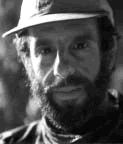 |
||||||||||||||||||||||||||||||||
| Paul Ginsparg Professor FCI, joint with Physics ginsparg@cs.cornell.edu http://xxx.lanl.gov/blurb/p96unesco.html Ph.D. Cornell, 1981 |
||||||||||||||||||||||||||||||||
|
I received my A.B. degree summa cum laude in Physics from Harvard University in 1977 and my Ph.D. in Physics from Cornell University in 1981 (Quantum Field Theory, thesis advisor: Kenneth G. Wilson), where I was supported as an NSF graduate fellow and A.D.White fellow. I was in the Harvard Society of Fellows from 1981-84, and an assistant professor in the Harvard University Physics department from 1984-90, where I was supported as an A.P. Sloan Fellow and as a DOE Outstanding Junior Investigator. I was a Technical Staff Member in the Los Alamos National Laboratory Theoretical Division from 1990-2001. I have also held visiting positions at C.E.N. Saclay, France, Princeton University, Stanford Linear Accelerator Center, the Institute for Advanced Studies, Princeton, the Institute for Theoretical Physics at UC Santa Barbara, the Mathematical Science Research Institute at UC Berkeley, and Hebrew University, Jerusalem. In 1991 I inititated the "e-print arXiv" as a new form of communications research infrastructure for physics. I have served on many committees and advisory boards, including most recently an NRC/CODATA committee on "Transborder flow of Scientific Data," an NAS/NRC committee on "Future of Universities," an AAAS study committee on "Transition from Paper," and an NSF committee on "Knowledge Networks and Distributed Intelligence Initiative," and I currently serve on the APS global "Task Force on Electronic Information Systems," on the NIH's "PubMed Central National Advisory Committee," on the Open Archives Initiative Steering Committee (and founder), on the French "Centre pour la Communication Scientifique Directe" technical steering committee (and founder), and on the APS "Publications Oversight Committee." I have also given numerous invited keynote talks and colloquia, including recently at meetings "Future of Mathematical Communication" at the University of Minnesota; "Electronic Publishing in Science" at UNESCO HQ in Paris; "50th Anniversary of the Development of the ENIAC computer" at the University of Pennsylvania; "The impact of electronic publishing on the academic community" in Stockholm, Sweden; "Alternative Models for Scholarly Publishing in Higher Education" at UC Berkeley; Chautauqua meeting of the National Computational Science Alliance at the University of KY, Lexington; joint meeting of the Medical Library Association and the Canadian Health Library Association, Vancouver, BC; "The Impact of Barrier-free Access and New Technologies on Biomedical Publishing" at the New York Academy of Medicine; and "Open Archives European Open day," at Max Planck Library in Berlin. Awards/Honors P.A.M. (Physics Astronomy Math) award from the Special Libraries Association. "Honors work which demonstrably improves the exchange of information in physics, math or astronomy" (1998). Fellow of the American Physical Society. Cited "For his work relating to chiral symmetry on the lattice, for fundamental contributions to string theory, and for establishment and development of the revolutionary 'Los Alamos E-Print Archive'" (November, 2000). Publications "A Remnant
of Chiral Symmetry on the Lattice." Phys. Rev. D25, 2649
(1982). And K. G. Wilson. "2D Gravity + 1D Matter." Phys. Lett. B240, 333 (1990). And J.Zinn-Justin. "First Steps towards Electronic Research Communication." Computers and Physics 8 (4):390 (July/August, 1994). "Winners and Losers in the Global Research Village." In proceedings of 'Electronic Publishing in Science,' Sir R. Elliot and D. Shaw, editors. Held at UNESCO HQ, Paris, ICSU Press (1996).
|
||||||||||||||||||||||||||||||||
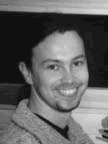 |
||||||||||||||||||||||||||||||||
|
|
||||||||||||||||||||||||||||||||
|
My
core scientific interests lie in machine learning and statistical learning
theory, with its main applications in the fields of text mining and
intelligent information agents. This application domain will be of increasing
importance, since human attention and the speed with which we can process
information are natural bottlenecks that limit our ability to make informed
decisions. While data-base and data-mining techniques can already assist
users when analyzing structured data, the problem of text mining, the
automatic analysis of text-based information, is still largely unsolved.
Therefore, from an application Publications "Knowledge
Discovery and Knowledge Validation in Intensive Care." Artificial
Intelligence in Medicine
|
||||||||||||||||||||||||||||||||
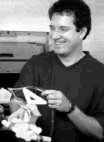 |
||||||||||||||||||||||||||||||||
|
|
||||||||||||||||||||||||||||||||
|
Engineers
design by combining knowledge and resources to make products that achieve
some functionality. Despite the fact that design is the basis of engineering,
this process of problem solving by synthesis is not understood well,
and is still taught, to a large extent, as an art. While we have elaborate
computational models for analysis, we still have no computational model
of synthesis. I believe understanding this process holds the key to
future competitiveness, and presents a largely unadressed challenge
across both engineering and computer science.
Publications "Automatic
Design and Manufacture of Robotic Lifeforms." Nature 406:974-978
(2000). With J.B. Pollack.
|
||||||||||||||||||||||||||||||||
 |
||||||||||||||||||||||||||||||||
|
|
||||||||||||||||||||||||||||||||
|
My
research interests include file systems, storage systems and more generally
operating systems and distributed systems. Awards/Honors Intel Foundation
Graduate Fellowship Award, 1999-2000. Publications "Improving
the Performance of Log-structured File Systems with Adaptive Methods."
Proceedings of "Serverless
Network File Systems." Award paper. In Proceedings of the Fifteenth
ACM
|
||||||||||||||||||||||||||||||||
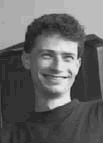 |
|
|||||||||||||||||||||||||||||||
|
Program
analysis automatically extracts information that is critical for understanding,
maintaining and In the last few
years I developed new techniques for pointer analysis and symbolic analysis
of accessed In the future,
I intend to extend this research to include software reliability and
computer security. In Awards/Honors Tuition Fellowship
from UC Santa Barbara between 1996 and 2001. Publications "Recursion
Unrolling for Divide and Conquer Problems." In Proceedings of the13th
International Workshop on Languages and Compilers for Parallel Computing,
IBM T.J. Watson Research Center, "Symbolic Bounds
Analysis of Pointers, Array Indices, and Accessed Memory Regions."
In Proceedings of the ACM SIGPLAN 1999 Conference on Programming Languages
Design
|
||||||||||||||||||||||||||||||||
 |
||||||||||||||||||||||||||||||||
|
Phoebe
Sengers |
||||||||||||||||||||||||||||||||
|
I am
a computer scientist and a cultural theorist. I build intelligent, interactive,
expressive information I have done research
on agents, avatars, virtual environments, and computer graphics at the
GMD in Honors/Awards Lingua Franca,
Tech Top 20 (July, 1999), named one of the "top 20 researchers
Publications Narrative Intelligence.
Michael Mateas and Phoebe Sengers, editors. Advances in Consciousness
Series. Amsterdam: John Benjamins Publishing Company, forthcoming. "Fabrikation
der Subjekte: Verdinglichung, Schizophrenie, und Kuenstliche Intelligenz."
In Netzkritik: Materialien zur Internet-Debatte. Geert Lovink and Pit
Schultz, editors. Berlin: Edition ID-Archiv
|
||||||||||||||||||||||||||||||||
|
|
||||||||||||||||||||||||||||||||
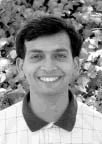 |
||||||||||||||||||||||||||||||||
|
My
broad research agenda is to build software systems that can serve as
the infrastructure for creating and deploying Internet-based business
applications (also referred to as e-business applications). The need
for building such infrastructure systems arises because currently, in
order to build e-business applications, application developers have
to program against relatively low-level interfaces and write a lot of
special purpose code. This plight of application developers is analogous
to that of programmers in the early days of computing, who had to write
assembly language programs without the aid of software systems such
as compilers and operating systems. My research goal of building software
infrastructure systems for e-business applications is thus motivated
by the need to provide developers with higher levels of abstraction.
Publications "Accessing
Extra-database Information: Concurrency Control and Correctness."
Information Systems, An International Journal 23(7):439-462 (1998).
With Narain Gehani, Krithi Ramamritham, and Oded "Efficient
Concurrency Control for Broadcast Environments." In Proceedings
of the ACM SIGMOD Cnference on the Management of Data, Pittsburgh, PA
(May, 1999). With Arvind Nithrakashyap, Rajendran Sivasankaran and Krithi
Ramamritham. Patents "Multi-dimensional
Database and Data Cube Compression for Aggregate Query Support on |
||||||||||||||||||||||||||||||||